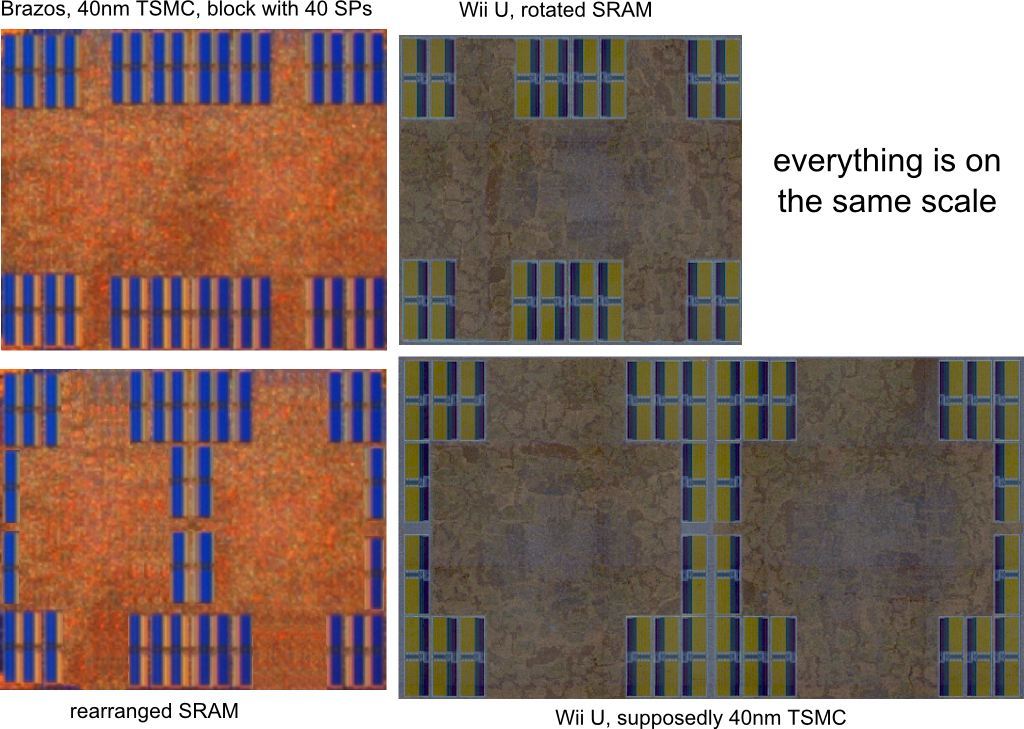Back on the fab thing ...
Is there actually any evidence that the GPU is manufactured on TSMC 40nm? Entropy's entire argument was based on Jim Sterling's word being fact, but we now know from Jim Sterling that it isn't a fact, so what else is there?
Wii U on Renesas 40/45nm with lower transistor density than AMD's "high density library" TSMC 40nm Radeon parts works rather well, just as it always has. If you want to use Occam's Razor, this is what it gets you IMO.
Another issue with TSMC 40nm would be that the Wii U simd block would have to be 15~20% higher density than Brazos to achieve 80 shaders per block:

... Which would mean that either Brazos SIMD blocks are far more complex than Wii U SIMD blocks, and/or that Renesas and Nintendo are kicking AMDs ass at AMDs own game despite using TSMC (whom AMD have many years of experience working with and with whom they have much experience and developing high density GPUs).
An interesting example of how density can change depending on tools and how layout is done (though this is talking about applying AMD GPU layout tools to their upcoming CPUs):
http://www.tomshardware.com/news/Steamroller-High_Density_Libraries-hot-chips-cpu-gpu,17218.html
It seems there can be a hell of difference based on who and how. I would not automatically assume that a Renesas designed and manufactured 40/45nm chip should be the same size as an AMD designed and TSMC manufactured 40nm chip.
Is there actually any evidence that the GPU is manufactured on TSMC 40nm? Entropy's entire argument was based on Jim Sterling's word being fact, but we now know from Jim Sterling that it isn't a fact, so what else is there?
Wii U on Renesas 40/45nm with lower transistor density than AMD's "high density library" TSMC 40nm Radeon parts works rather well, just as it always has. If you want to use Occam's Razor, this is what it gets you IMO.
Another issue with TSMC 40nm would be that the Wii U simd block would have to be 15~20% higher density than Brazos to achieve 80 shaders per block:

... Which would mean that either Brazos SIMD blocks are far more complex than Wii U SIMD blocks, and/or that Renesas and Nintendo are kicking AMDs ass at AMDs own game despite using TSMC (whom AMD have many years of experience working with and with whom they have much experience and developing high density GPUs).
An interesting example of how density can change depending on tools and how layout is done (though this is talking about applying AMD GPU layout tools to their upcoming CPUs):
http://www.tomshardware.com/news/Steamroller-High_Density_Libraries-hot-chips-cpu-gpu,17218.html
It seems there can be a hell of difference based on who and how. I would not automatically assume that a Renesas designed and manufactured 40/45nm chip should be the same size as an AMD designed and TSMC manufactured 40nm chip.
